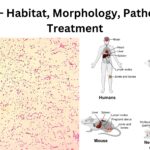IB Biology 10 Views 1 Answers
Sourav PanLv 9November 9, 2024
How does flowering in plants involve a change in gene expression in the shoot apex?
How does flowering in plants involve a change in gene expression in the shoot apex?
Please login to save the post
Please login to submit an answer.
Sourav PanLv 9May 15, 2025
Flowering in plants involves a complex interplay of environmental signals and changes in gene expression, particularly at the shoot apex, where the shoot apical meristem (SAM) is located. Here’s how this process unfolds:
1. Environmental Cues and Hormonal Signals
- Photoperiod and Vernalization: The timing of flowering is influenced by environmental factors such as day length (photoperiod) and temperature (vernalization). In many plants, exposure to long days during spring triggers the transition from vegetative growth to flowering. This response is mediated by specific genes that are activated in the SAM when the appropriate light conditions are met.
- Hormonal Interactions: Hormones such as auxins, gibberellins (GAs), and cytokinins play significant roles in regulating flowering. For example, gibberellins are known to promote flowering in some species by enhancing the expression of floral identity genes at the SAM. The interplay between these hormones and environmental signals is crucial for initiating flowering.
2. Gene Expression Changes
- Activation of Flowering Genes: Key genes involved in the floral transition include FLOWERING LOCUS T (FT), which encodes a protein that acts as a mobile signal from leaves to the shoot apex, promoting flowering. Upon activation by long-day conditions, FT protein is transported to the SAM, where it induces the expression of downstream floral identity genes such as LEAFY (LFY) and APETALA1 (AP1), which are critical for flower development.
- Regulatory Networks: The expression of FT is regulated by several pathways that integrate environmental cues. For instance, FLOWERING LOCUS C (FLC) acts as a repressor of flowering under non-inductive conditions. When FLC levels decrease due to vernalization or other signals, FT expression increases, leading to floral induction.
3. Changes in SAM Morphology
- Morphological Changes: As plants transition to flowering, the SAM undergoes morphological changes, such as increased size and altered shape. These changes are associated with a reprogramming of gene expression that shifts from producing leaves to producing flowers. Studies have shown that specific transcription factors expressed in different regions of the SAM coordinate these morphological changes.
- Reciprocal Gene Regulation: Research indicates that genes like AP2 and SOC1 exhibit reciprocal regulation during this transition. For example, AP2 promotes vegetative growth but is downregulated as flowering approaches, while SOC1 promotes flowering by activating floral identity genes. This dynamic regulation ensures that the timing of flowering aligns with optimal environmental conditions.
4. Epigenetic Regulation
- Histone Modifications: Epigenetic mechanisms also play a role in regulating gene expression during flowering. Changes in histone marks at specific gene loci can influence their accessibility and transcriptional activity in response to developmental cues . This regulation ensures that genes necessary for flowering are expressed at the right time.
0
0 likes
- Share on Facebook
- Share on Twitter
- Share on LinkedIn
0 found this helpful out of 0 votes
Helpful: 0%
Helpful: 0%
Was this page helpful?




